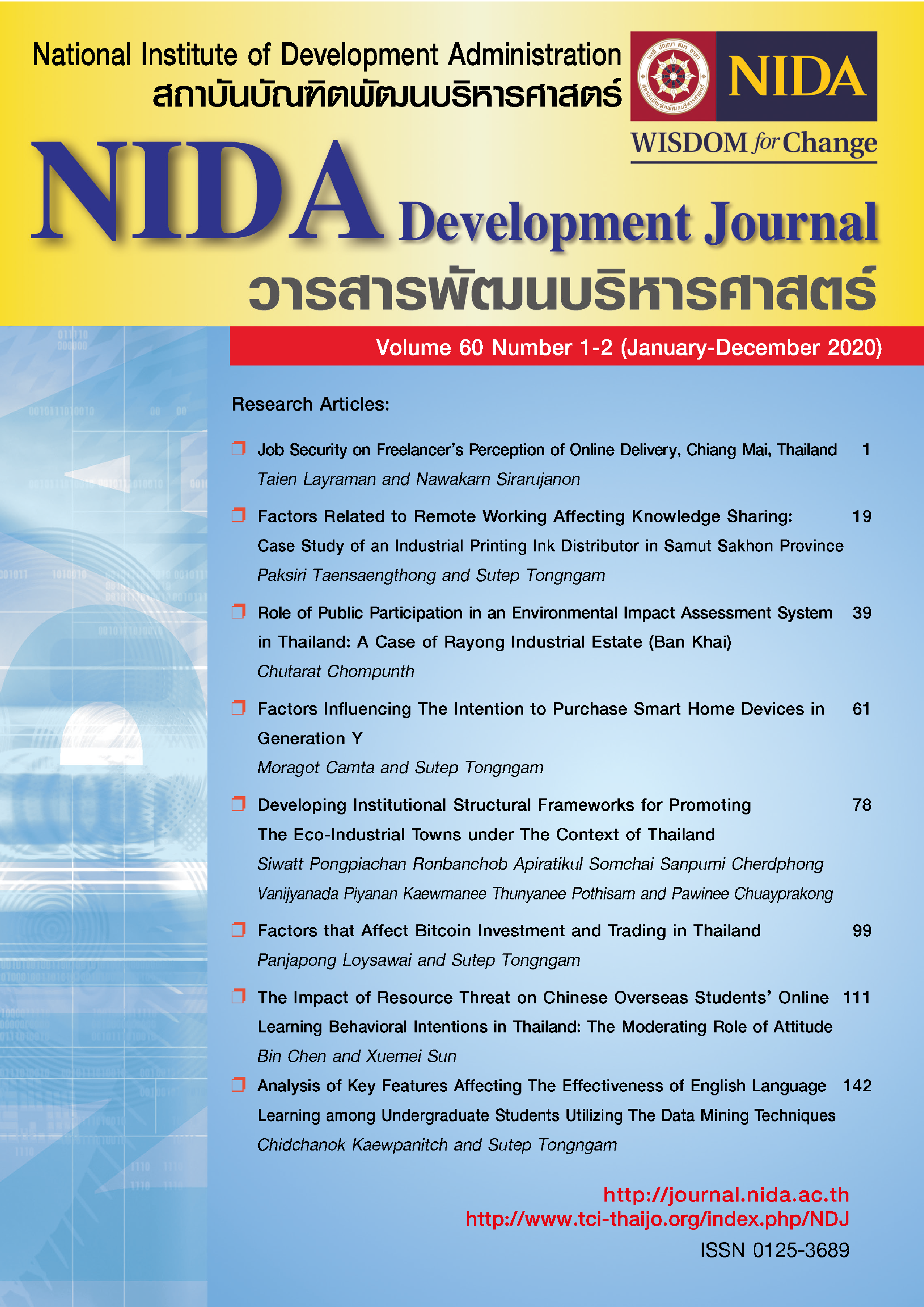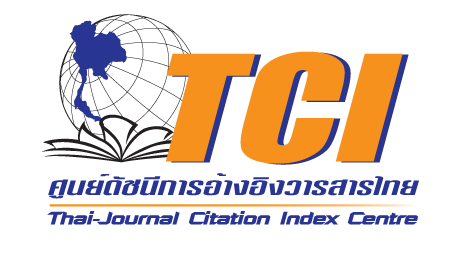Role of Public Participation in an Environmental Impact Assessment System in Thailand: A Case of Rayong Industrial Estate (Ban Khai)
Keywords:
Public Participation, Environmental Impact Assessment, Environmental Conflict, Industrial Estate, legislationsAbstract
This research has the objective to study the public participation’s process in EIA (Environmental impact assessment), including evaluation of the effectiveness of the public participation and recommending new processes in developing the development of public participation processes in EIA in the case study of The Rayong Industrial Estate Project (Ban Khai) Zone. This research uses semi-structured interviews, non-participatory observation and site survey with the stakeholders of the project as methods of data collection. The study indicates that the public hearing has obstacles and does not cover all stakeholders. Furthermore, some citizens are not informed of the project which leads to the protest from the opposing groups against the participation in every activities. For the participation of citizens, it was found that citizens do not have enough time to prepare for the hearing of the project. As a result, the citizens do not have confidence in the decisions of government. In order for the development process with public participation in environmental impact assessment to be successful, government and project developers have to realize the importance of the participation of the public, transparency in operations and provide accurate and complete information about the project. Also, they have to be ready to receive the public’s feedback from the start of the project to know the real demand of the people in the area. The public needs to learn about the environmental impact assessment, participation of citizens and relevant legislations.
References
Brown, David L.(1983).Managing Conflict at Organization Interfaces.Massachusetts: Addison-Wesley.
Creighton, J. L. (2005). The Public Participation Handbook: Making Better Decisions Through Citizen Involvement. John Wiley & Sons.
Japan International Cooperation Agency (2005). Comparative Analysis of Governance: Relationship Between Bureaucracy and Policy Co-ordination Capacity with Particular Reference to Bangladesh. Retrieved January 20, 2016. Retrieved from http://jica- ri.jica.go.jp/IFIC_and_JBICI-Studies/jica
Hyman, E. L. and Stiftel, B. (1988). Combining facts and Values in Environmental Impact Assessment. Boulder: Co West view.
Meredith, T. C. (1992). Environmental Impact Assessment, Cultural Diversity, and Sustainable Rural Development. Environmental Impact Assessment Review. 12, 1-2 (March– June): 125-138.
Petts, J. (1999). Public Participation and Environmental Impact Assessment. Handbook of Environmental Impact Management. Oxford: Blackwell Science.
Wathern, P. (1988). An Introduction Guide to Environmental Impact Assessment In Environmental Impact Assessment Theory and Parctice, P. Wathern, ed. London: Unwin Hayman. Pp. 3-30
Bouchum, M. (2011). Transparency in Budget Management of Schools as Perceived by Teachers under the Jurisdiction of Pattani Primary Educational Service Area Office I. Master’s Thesis (Educational Administration) Prince of Songkla University.
Chompunth, C. (2013). Good Governance and Public Participation in Decision-making Process of Development Project. Journal of Environmental Management. 9 (1), 85-106.
Environmental Impact Evaluation Bureau (2011). Guidelines for Public Participation and Environmental Social Impact Assessment in Environmental Impact Assessment. (6th ed.). Bangkok: B. V. Offset Limited Partnership.
Fuangchoonuch, M. and Chompunth, C. (2017). A Public Participation in Environmental Health Impact Assessment: A Case Study of Krabi Power Plant Expansion Project. Journal of Community Development Research (Humanities and Social Sciences). 10 (2), 174-184.
Ratanachai. C. (2008). Environmental Impact Assessment. Bangkok: Chulalongkorn University Printing House.
Rujiravanich, S. (2010). Public Participation Components of People Impacted by the Natural Gas Pipeline Project. Ph.D. Thesis. (Public and Private Management). Christian University.
Soponpats, P. and Chompunth, C. (2013). An Evaluation of Public Participation in Environmental Impact Assessment: A Study of the Khao Hin Son Coal-Fired Power Plant Project, Chachoengsao. Rajabhat Rambhai Barni Research Journal. 7 (3), 93-101.
Downloads
Published
How to Cite
Issue
Section
License
Copyright (c) 2024 NIDA Development Journal

This work is licensed under a Creative Commons Attribution-NonCommercial-NoDerivatives 4.0 International License.





